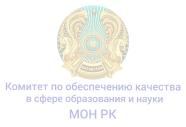CHINA'S POLICY TOWARDS ETHNIC MINORITIES IN XINJIANG: HISTORICAL TRADITIONS AND PECULIARITIES OF TODAY
DOI:
How to Cite
Abstract
This article examines the historical and traditional knowledge of China's policy towards ethnic minorities, the main features and main aspects of the CCP's policy today, as well as the Xinjiang issue. The strategic status of Xinjiang and the potential for ethnic unrest lead to a higher level of concern for the Chinese authorities than other provincial regions. Today, official Beijing is faced with the question of whether it protects the rights of minorities from the world community and how it should honor its commitment to minority rights. According to the Chinese historical-traditional understanding, the conflict between ethnic minorities and the Han creates a contrast between civilization and degradation. According to the historical-traditional understanding, this difference concerns obvious «differences» in physical characteristics or language. This is mainly manifested in «cultural differences» with behavioral values and norms. What are the features of the «historical-traditional» approach to minority issues? What are the main factors influencing the ethnic policy of China, forcing the transition from cultural assimilation to the politicization of the ethnic problem? According to the concept and position of the Chinese authorities, the historical-traditional approach considers the unification of political unity, ethnic equality and cultural diversity in order to effectively solve the problem of minorities.
Key words: China today, political nations, minorities in China, Xinjiang problem, historical and traditional knowledge, ethnic policy








